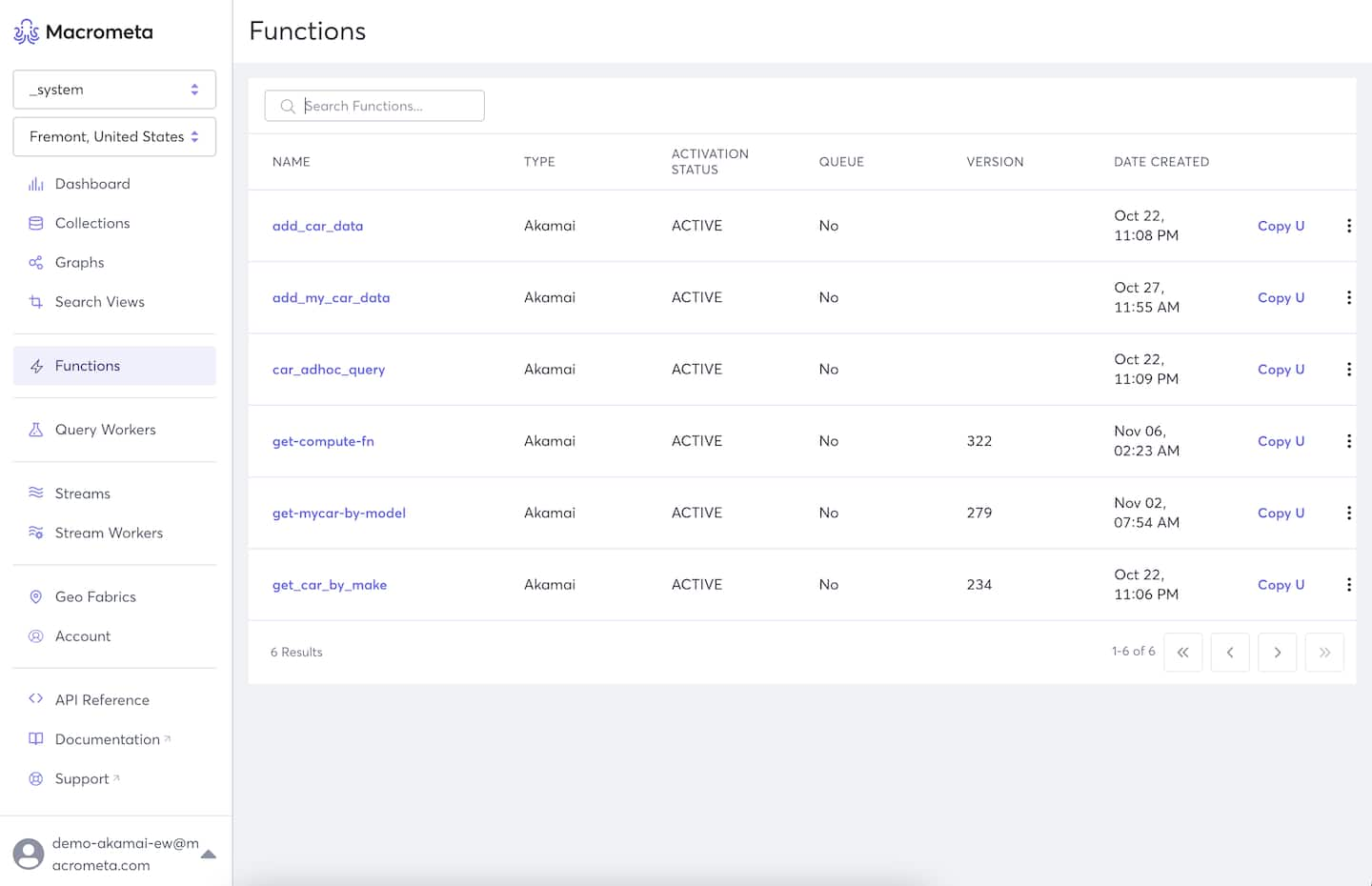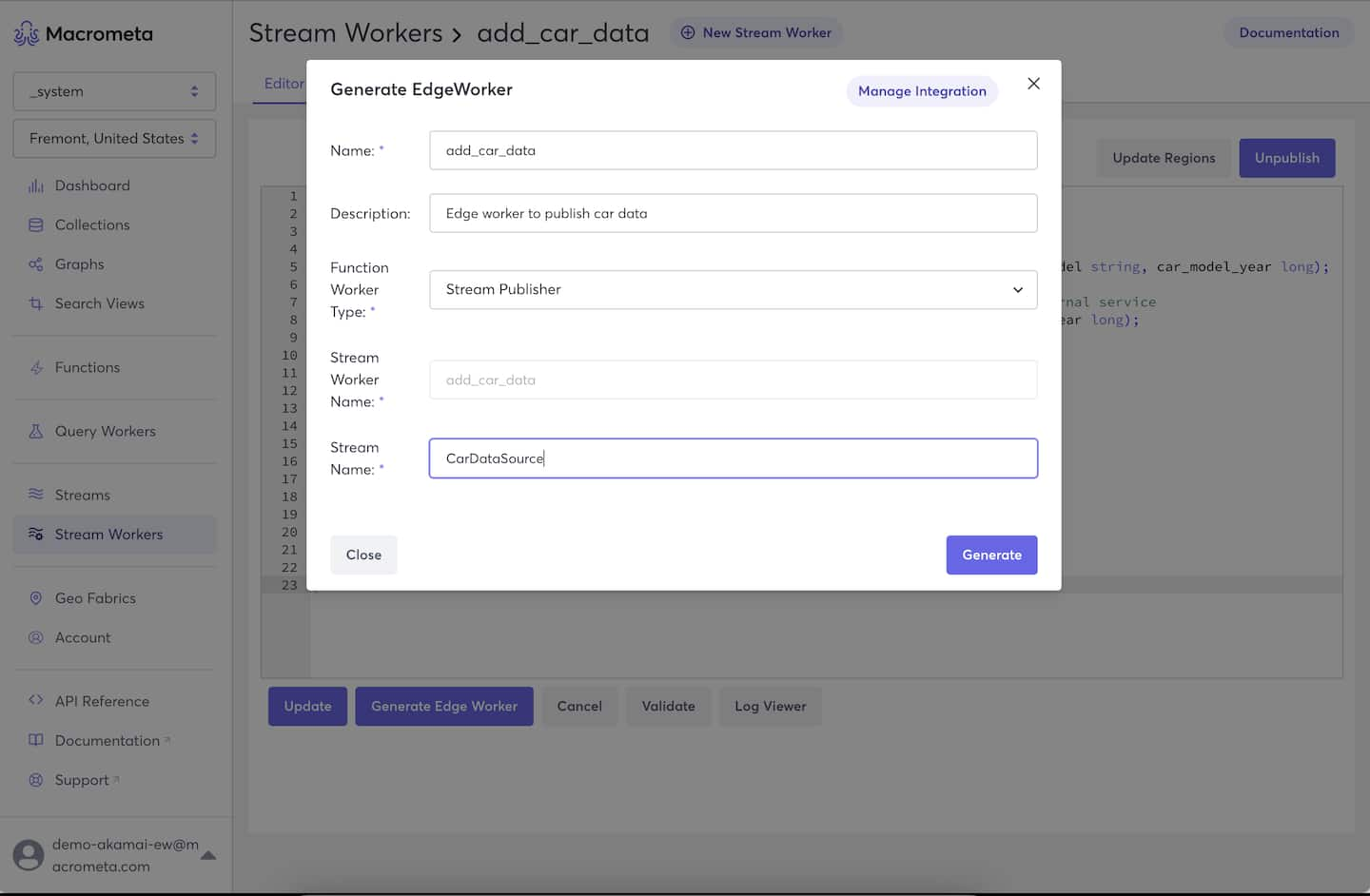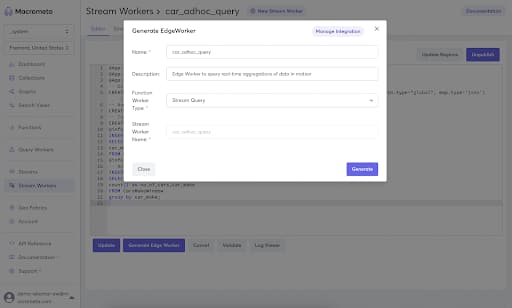CDN Meets GDN: Akamai Partners with Macrometa

Ten years ago, the typical sales model was that software vendors sold products that customers purchased and deployed in their on-premises data centers to make them available for internal and external users. Similarly, business-to-consumer (B2C) companies, such as Yahoo, hosted the software in their data centers and made it available to users.
Today, nearly 90% of enterprise software is provided either as software as a service (SaaS) or platform as a service (PaaS) running in the clouds. The old model is nearly extinct.
Three drivers of change: from edge to cloud
We are at an inflection point in the industry. In the next few years, enterprise software will be served from the edge, with the cloud used primarily for batch processing. Three drivers are forcing this change:
- Serve apps and API nearer to users
- Move compute closer to data source
- Implement rules to protect and control data
Serve apps and API nearer to users
Cloud hyperscale data centers are located thousands of miles from dense population centers for economic reasons. This creates large latencies for 80% of the population. The only way to solve this is to serve apps and APIs from locations closer to the users.
Move compute closer to data source
Data is often generated in petabytes and zettabytes. The cloud model moves the data to compute to process and serve as apps and APIs, but the size of the data makes it impractical to transfer. A better model is to move the compute closer to where the data is generated.
Implement rules to protect and control data
Most countries and companies are finally figuring out how to utilize and monetize data. Add to this the privacy concerns by consumers, and the net result is a growing trend of sovereign rules and regulations to protect and control data — for example, the European Union’s General Data Protection Regulation, the California Consumer Privacy Act, India’s Personal Data Protection Bill, and so forth.
Enable developers to build apps and APIs on the edge
The modern web would not have existed without the pioneering efforts made by Akamai in the 2000s to provide content closer to users. We are excited that Akamai has partnered with Macrometa to meet the needs of this next technological inflection point and enable developers to build rich stateful applications and APIs on the edge while delivering ultra-low latency.
Integrate CDN with GDN: create and deliver content anywhere
The bi-directional integration between the Akamai content delivery network (CDN) and the Macrometa global data network (GDN) provides developers with the tools to build enterprise apps in minutes and the ability to dynamically create and deliver content anywhere.
This integration also helps remove friction from the development process by allowing developers to deploy EdgeWorkers from Macrometa’s platform.
What is Macrometa?
Macrometa GDN is an edge platform for developers to store, process, and serve data as stateful apps and APIs with very low latencies.
In a typical scenario, a database or streaming system is deployed to a single region. All calls to the database or streaming system have to reach this region from around the world, incurring thousands of milliseconds of latency.
Remove the latency
Macrometa GDN helps remove the latency involved in crossing these huge distances by moving the database, stream, and stream processing capabilities closer to the client. In other words, GDN is like a CDN but for database, streams, and complex event processing.
The Akamai and Macrometa integration combines CDN and GDN to enable developers to build rich, stateful, edge-native enterprise apps and APIs and serve them instantly worldwide.
Build, deploy, and run apps and APIs
Akamai EdgeWorkers technology combined with Macrometa GDN enables enterprise developers to build, deploy, and run applications and APIs across the edge and the cloud. Developers will have access to the Akamai network, which includes hundreds of public cloud regions covering Linode, Akamai Cloud Computing, as well as AWS, GCP Azure, and telecom 5G networks.
Data at the edge: use cases
There are many use cases that can benefit from handling data at the edge. Broadly, the use cases fall into two types:
Request-response driven use cases that are served via microservices/APIs
Event-driven use cases that are served by real-time pipelines
Macrometa GDN integration with Akamai EdgeWorkers supports both models, allowing developers to create stateful apps and compelling user experiences from the edge.
A developer can build stateful APIs on Macrometa that deploy directly onto the Akamai network as EdgeWorkers. Similarly, developers can power complex event processing pipelines directly from the Akamai network using EdgeWorkers.
Query Workers and EdgeWorkers
There are many scenarios in which a developer might want to provide rich stateful APIs in close proximity to end users to power their digital commerce and other applications. Query Workers in Macrometa GDN enables developers to create stateful functions similar to SQL stored procedures, but using SQL and JavaScript instead.
With the integration between Macrometa GDN Query Workers and Akamai EdgeWorkers, developers can now integrate EdgeWorkers directly from GDN and deploy it globally on the Akamai network in close proximity to users. Similarly, developers can also monitor the status of EdgeWorkers directly from the Macrometa GDN.

Fig. 1: Generate EdgeWorkers on Macrometa console

Fig. 2: Access available functions
Stream Workers and EdgeWorkers
In addition, there are numerous scenarios in which a developer may want to execute EdgeWorkers to send events to a complex event processing pipeline — for example, ELT, Clickstream Analytics, etc. Likewise, there are scenarios where a developer might push data directly into EdgeWorkers (e.g., Internet of Things devices).
With this integration, Macrometa GDN lets developers utilize Akamai EdgeWorkers for publishing events to geo-replicated pub-sub streams and to trigger complex event-processing pipelines.

Fig. 3: Adding EdgeWorkers details
Furthermore, developers can use Akamai EdgeWorkers to query data flowing through event processing pipelines for real-time aggregations and transformations to power their applications from the edge; for example, dashboards, leaderboards, etc.
Adding EdgeWorkers helps ensure that logic and function are deployed and active at the nearest location to end users — across the world’s largest network.

Fig. 4: EdgeWorkers creation complete
Summary
The bi-directional integration between Akamai CDN and Macrometa GDN offers developers rich tools with which to build enterprise apps and APIs quickly, while serving them as closely as possible to users around the globe. In addition, this integration removes friction from the development process by allowing developers to deploy and manage Akamai EdgeWorkers from Macrometa’s platform.
Find out more
Akamai will be a featured guest at Macrometa’s First Annual Developer Week, November 7 – 11, 2022. Visit www.macrometa.com/developer-week to find out more.


